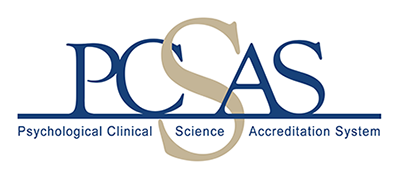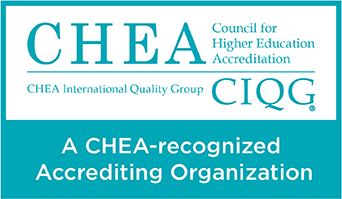By Matt Matoni, M.A., Temple University
The clinical internship has long been fundamental to clinical psychology training programs. It provides a unique opportunity to directly apply what we have learned over the past years and gain new training from clinical experts in a chosen area. Moreover, the supervised training and service provision is critical to accreditation and licensure processes. The importance of the internship is clear, particularly for those pursuing a clinical career.
However, in this opinion piece I argue that despite its benefits, the internship as currently constructed is a financial strain and a barrier to an equitable field. I believe that it is necessary to recognize challenges that the current internship system poses and immediately consider potential alternatives. Across all levels of clinical psychology training, including university departments, internship sites, and accreditors, changes must be implemented to reduce the burden of the clinical internship.
The Cost of Internship
The clinical internship process is financially burdensome, a fact that exacerbates inequalities in the field by disproportionately affecting trainees from lower socioeconomic backgrounds. A 2018 survey found that internship applications cost each applicant, on average, nearly $2,500 (Keilin, 2018). However, a more recent survey (APPIC, 2021) found that this cost decreased to nearly $700 after moving interviews virtually. After selecting and ranking several possible sites, applicants are designated to their ultimate site by a third party through the APPIC match program. At this point, applicants must pay out-of-pocket to move themselves to a nearby city, state, or even across the country. This move itself can cost what equates to several months of a graduate student’s stipend. Moreover, applicants living with partners or children must decide to spend at least a year apart or have their family move as well. These are high costs for a one-year training experience with limited pay, as over two-thirds of internship sites do not pay at least the living wage of their respective cities (Hood, 2022). After this one year, many interns move again for postdoctoral or other positions, creating a situation where trainees are moving multiple times in a few-year stretch while making less than a living wage. Together, these costs place large financial burdens and stress on trainees, and, as outlined in a previous PCSAS article by Brett Schneider, contribute to inequities in clinical psychology.
Potential Solutions
Stipend Levels
The benefits of the clinical internship are clear, but so are its costs. I believe it falls on leaders at all levels of clinical psychology training to take the initiative to consider and implement changes to alleviate some of the burden the internship poses. The most direct route is increasing stipend rates at doctoral programs and internship sites. As noted, stipends at most locations do not cover a living wage, and it is rare for annual stipend raises to keep up with inflation. While I believe individual sites should be responsible for paying a livable wage, one systematic change could be for accreditation to require that internship sites pay at least the living wage in their area. Surely this change would have several challenges at the institutional level, and some may consider it unrealistic, but in my view, it is also unrealistic to expect students to continue to live on stipend levels below the living wage while also spending several months pay on moving costs.
Postdoctoral Internship
Outside of direct raises to pay, there are several options more specific to the structure of the clinical internship. A common suggestion is for the internship to be a postdoctoral option rather than a requirement for a clinical doctoral degree, which would be consistent with most other health professions. Berenbaum et al. (2021; see this PCSAS article for a brief summary) proposed a novel system where clinical psychology training includes a 2–3-year foundational phase where core competencies in clinical research and practice is established, followed by a second phase where students train in focal clinical topics. At the end of the focal phase, the student would be conferred a clinical PhD, leaving the internship as a postdoctoral option. A clear benefit of this approach is that only students who would benefit from the clinical internship, such as those pursuing a clinical practice career, would need to pursue it. Trainees interested in careers in research, government, data science, or other industry options that can follow a clinical psychology Ph.D. can instead pursue further training that is more specific to their interests. In short, this flexibility would permit students to receive the training that is most beneficial for them and avoid unnecessary costs. Furthermore, students who seek a clinical internship would likely be in a position to receive higher pay, as they would already have a Ph.D., and there may be more funding available as fewer spots are filled due to other students pursuing other routes. Making internship postdoctoral was a main topic of conversation at the recent Academy for Psychological Clinical Science (ACPS) summit, where many agreed on its benefits but noted the sizeable obstacles at state licensure levels.
Program-Affiliated Internships
While shifting internship to a postdoctoral option requires system-level changes, doctoral programs can make more immediate shifts to benefit students. It is possible for programs to affiliate with local clinical service providers to create a local accredited internship that students can complete during their typical doctoral training. Benefits of this include eliminating the uncertainty of a match process and application and moving costs, as well as allowing students to potentially graduate a year earlier to seek higher-paying employment. These benefits can save students thousands of dollars and allow them to avoid moving multiple times. Emory’s clinical psychology program is an excellent example of this, as their affiliation with an internship in the psychiatry department enables students to complete their internship during the 4th and 5th years of the program. A notable limitation of this approach is that it requires the availability of local solutions, which are biased toward more urban and well-funded programs.
Conclusion & Direction
Whether raising pay, moving internship postdoctoral, creating internship opportunities within doctoral programs, or other options, I believe that it is clear that the internship system needs to change. Interns are often not paid livable wages (Hood, 2022), compounded by high application costs and moving expenses. These barriers contribute to inequalities in the field and are unnecessary for doctoral students pursuing careers outside of clinical work. None of these issues are new; Gee et al. (2022) published a data-driven call to action, and Berenbaum et al. (2021) provided novel recommendations to address several barriers in the field. Each of these papers is highly important to the field and should be discussed by leaders at all levels of clinical psychology. While it is exciting that discussions such as these papers are happening, I believe it is also necessary to begin considering action sooner rather than later. Any change is likely to have downsides, some expected and some unexpected. However, in my view, the internship training system cannot continue as constructed or our field will risk losing promising candidates without the financial privileges to overcome the system’s burdens. _______________________________________________________
References
Berenbaum, H., Washburn, J. J., Sbarra, D., Reardon, K. W., Schuler, T., Teachman, B. A., Hollon, S. D., Atkins, M. S., Hamilton, J. L., Hetrick, W. P., Tackett, J. L., Cody, M. W., Klepac, R. K., & Lee, S. S. (2021). Accelerating the rate of progress in reducing mental health burdens: Recommendations for training the next generation of clinical psychologists. Clinical Psychology: Science and Practice, 28(2), 107–123. https://doi.org/10.1037/cps0000007
Gee, D. G., DeYoung, K. A., McLaughlin, K. A., Tillman, R. M., Barch, D. M., Forbes, E. E., Krueger, R. F., Strauman, T. J., Weierich, M. R., & Shackman, A. J. (2022). Training the Next Generation of Clinical Psychological Scientists: A Data-Driven Call to Action. Annual review of clinical psychology, 18, 43–70. https://doi.org/10.1146/annurev-clinpsy-081219-092500
Hood, C. O., Schick, M. R., Cusack, S. E., Fahey, M. C., Giff, S. T., Guty, E. T., Hellman, N., Henry, L. M., Hinkson, K., Long, E. E., McCoy, K., O’Connor, K., Padron Wilborn, A., Reuben, A., Sackey, E. T., Tilstra-Ferrell, E. L., Walters, K. J., & Witcraft, S. M. (2023). Short-changing the future: The systemic gap between psychology internship stipends and living wages. Training and Education in Professional Psychology. Advance online publication. https://doi.org/10.1037/tep0000449
Keilin, G. (2018, December 30). Applicant Survey – 2018 – Part 1. Retrieved July 1, 2020, from https://www.appic.org/Internships/Match/Match-Statistics/Applicant-Survey-2018-Part-1
Disclaimer: The views and opinions expressed in this newsletter are those of the authors alone and do not necessarily reflect the official policy or position of the Psychological Clinical Science Accreditation System (PCSAS).


